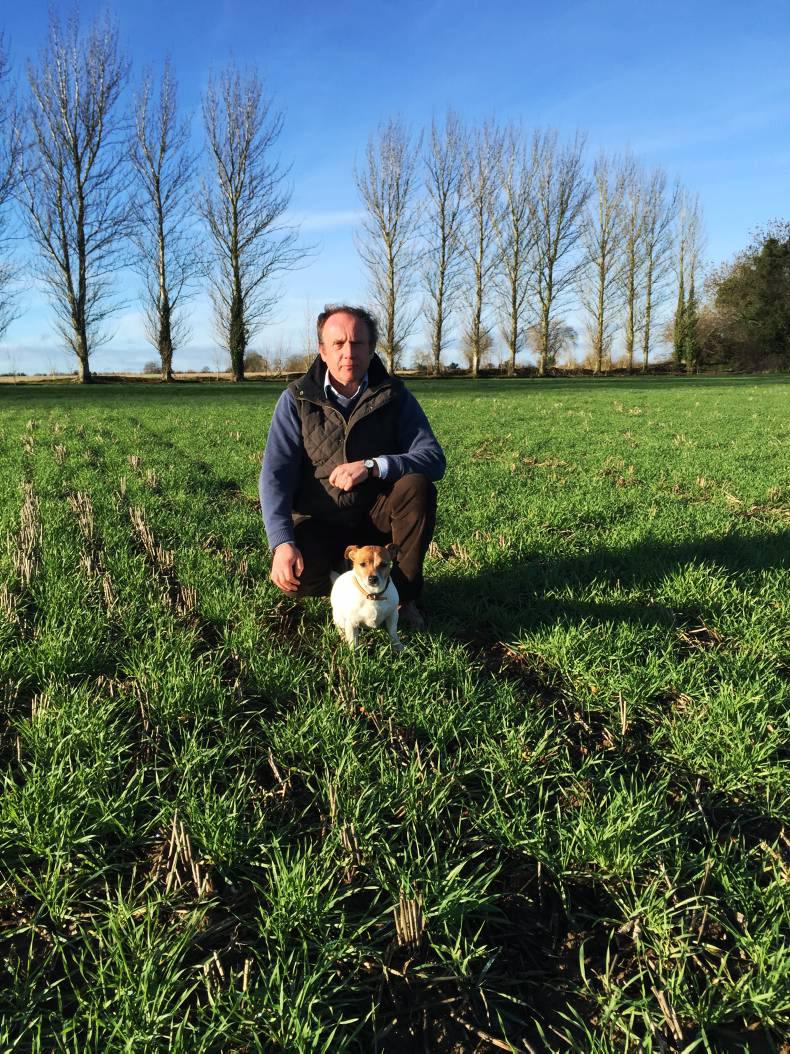It’s little wonder that half the country is flooded. Over the years, the OPW has done superb work, in terms of restoring or protecting our built heritage. Newgrange, Dublin Castle and the Oldbridge Estate are three splendid examples.
In total, the OPW has responsibility for 780 heritage sites or buildings, which is no mean task. But it is also responsible for flood risk management, an area in which their brilliance is assuredly more uncertain.
Let me give you a simple example. An OPW-maintained waterway divides our two farms. In reality, it’s little more than a stream, but an important one, which winds its way to the Boyne.
Every so often, a leisurely OPW crew appears to give it a bit of a clean-up. The excavator arrives on a 50t low-loader and the two-man crew, consisting of the driver and a banksman, wander along in a day or so.
The cab is completely clad in a galvanised steel mesh and resembles the gorilla cages in the zoo. I’m not sure whether this is to stop the driver from escaping or maybe it’s to prevent vandalism.
Eventually they get to work, but productivity at times appears low. In fact, it can be hard to see what they’ve done. I’d encourage them – they’re always amenable fellows – to be fairly thorough in their task, as I like to see the water flowing. But while the odd bough is scooped out of the water, it’s a trivial exercise producing a very negligible result. Dredging it is not.
It’s the same on a much larger project, the environmental river enhancement programme. The purpose of this ongoing national programme is to improve the fish habitats and ecosystems of several designated rivers. The flow may improve as a result.
Such are the OPW’s priorities and recently, as part of this programme, they spent months building rockeries on a local stretch of the Boyne with enough heavy machinery, rock breakers and manpower to widen the M50.
These OPW operations should all be sub-contracted to the private sector. But, you see, they think nobody else can do this sort of work like them. True – but that’s precisely the problem.
Political masters
However, the OPW is but the servant of its political masters and this public work is crazy as people paddle around the midlands.
If the same funding was directed into old-fashioned river dredging, there’d be a lot less flooding today.
But dredging has seemingly become the new politically taboo subject – since it’s now okay to talk about IFA salaries.
The ESB doesn’t favour it on the Shannon, but it has a vested interest. It’s the same with Birdwatch Ireland, Fisheries Ireland, An Taisce and all the other environmental idealists. But forget this legend about each salmon being worth €1,000 to the local economy. Dry feet come first.
The Government will have to get tough with these vested interests and proceed with a campaign of river dredging and maintenance before we’re all sunk.
The people of the Shannon catchment are being treated like those in an underdeveloped third world country. God forbid, but there’ll be an outbreak of cholera yet.
The topography of our largest field is Ireland in microcosm. There’s a depression in the centre, which was drained in the 1950s with 6in clay pipes. With the high water table, water has been thundering out of this outfall at up to 29,000 litres/hour. Okay, it’s not the Parteen weir, but it’s almost 700t of water every 24 hours.
However, if I were to adopt the OPW model and neglect to keep my drains running, half the farm would be under water.






 This is a subscriber-only article
This is a subscriber-only article










SHARING OPTIONS: